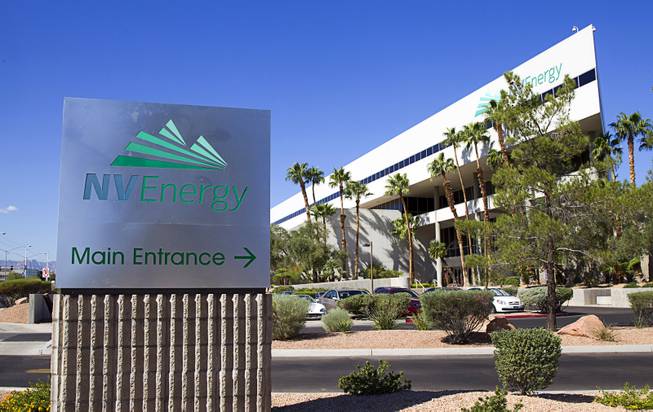Tuesday, Nov. 3, 2015 | 2 a.m.
Next month, regulators will decide on a proposal for how NV Energy will supply customers with power in the future.
Known as the integrated resource plan, the power company’s proposal is a pitch made every three years to regulators about the company’s long-term strategy. The state’s energy gurus have been debating since June. Last week, officials representing gaming, renewable energy, conservation groups, state bureaucrats and NV Energy huddled at the Public Utilities Commission office to testify on the nearly 5,000-page plan. The commission will decide on a final plan by Dec. 28.
The conversations were wonky but the underlying question was simple: What will customers be paying for?
Here are three takeaways from the meetings:
ONE NEVADA TRANSMISSION LINE
The $554 million transmission line that connects Ely and North Las Vegas is one of the many North-South battles. NV Energy, which owns part of the line, charges Southern Nevada ratepayers 95 percent of the costs and Northern Nevada customers the rest. NV Energy had suggested changing the cost to a 70-30 split, before backing off that proposal.
The transmission line won approval after state and federal lawmakers touted it as a way to feed the South with geothermal energy and other resources from the North. But 2014 data show that more than a quarter of the energy transmitted is going the other way, leading many in Las Vegas to advocate for cutting the South’s share of the cost.
Energy consultants representing the Southern Nevada Hotel Group, a lobbying arm of Las Vegas Strip operators, testified that originally there was a “rationale” for charging Southern Nevada more. “That rationale now, however, is much less compelling,” Mark Garrett, president of Oklahoma-based energy consulting firm Garrett Group.
NV Energy responded by saying that it does not favor changes to the current cost-sharing model, saying a change would “complicate initial investment decisions” and create “unnecessary administrative burdens,” according to James Doubek, NV Energy vice president of resource planning and analysis.
THE $1 BILLION POWER PLANT
The company pushed back on reports that it plans to build a new $1 billion natural gas power plant. In its plan, the company requested to spend $2.4 million to study building one, calling the plant a “placeholder.” Critics asserted that the company, which would be able to send nearly $100 million to shareholders if the plant were built, was not weighing all available options.
The power company said a plant study would protect the interests of ratepayers. “If the company doesn’t preserve options, the company will not have a complete set of alternatives,” Doubek said in testimony.
During the year’s hottest months, NV Energy feeds high demand in Las Vegas by purchasing power from a natural gas power plant in Arizona. NV Energy did not say in its proposal that it would renew its contract with the operator of that plant when it expires in 2017, leaving critics to speculate that the power company was creating a gap its proposed power plant would fill.
NATURAL GAS VS. RENEWABLES
NV Energy may have 2,253 megawatts — the equivalent to 150,000 homes — of new natural gas energy on the market by 2030, according to its PUC filings. If those plans were approved, NV Energy would have natural gas providing 78.7 percent of its power in 2030.
That would be a 5 percent spike in gas and would dwarf in comparison to renewables. Renewable energy would be just 16 percent of the company’s portfolio by 2030 — a fractional decrease from where it estimates it will be by 2020.
That has environmentalists worried.
“We are concerned that all of the supply-plan alternatives modeled by [NV Energy] over both the 20-year and 30-year planning periods continue a heavy reliance on fossil-fuel generation,” Nancy Kelly, a senior policy adviser for Western Resource Advocates, said in testimony. “After 2018, Nevada’s progress in transitioning away from dependence on fossil-fueled generation to renewable resources comes to a virtual halt.”


Join the Discussion:
Check this out for a full explanation of our conversion to the LiveFyre commenting system and instructions on how to sign up for an account.
Full comments policy